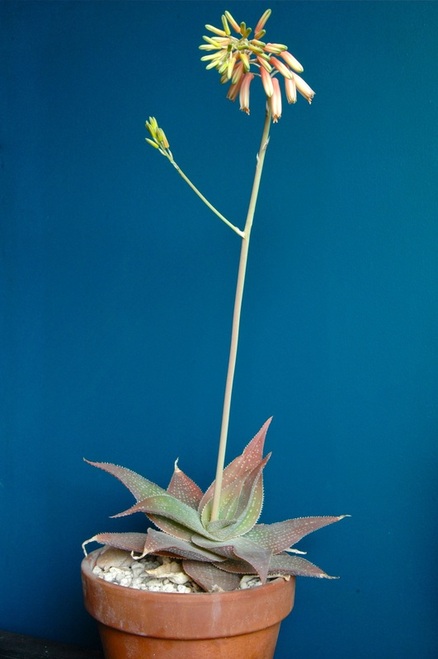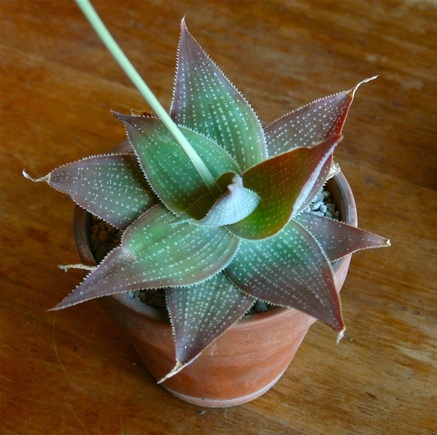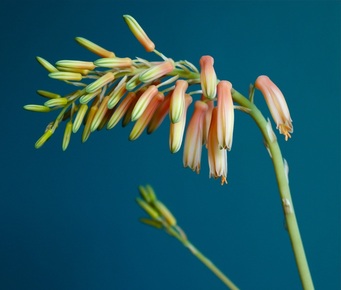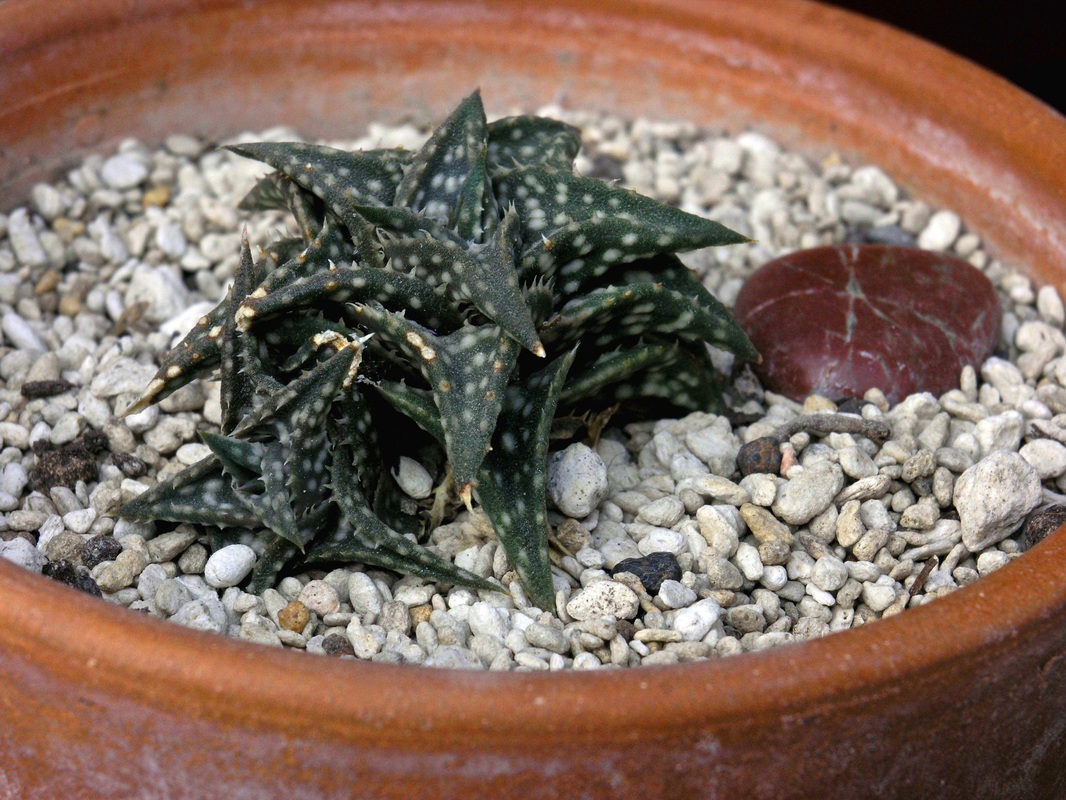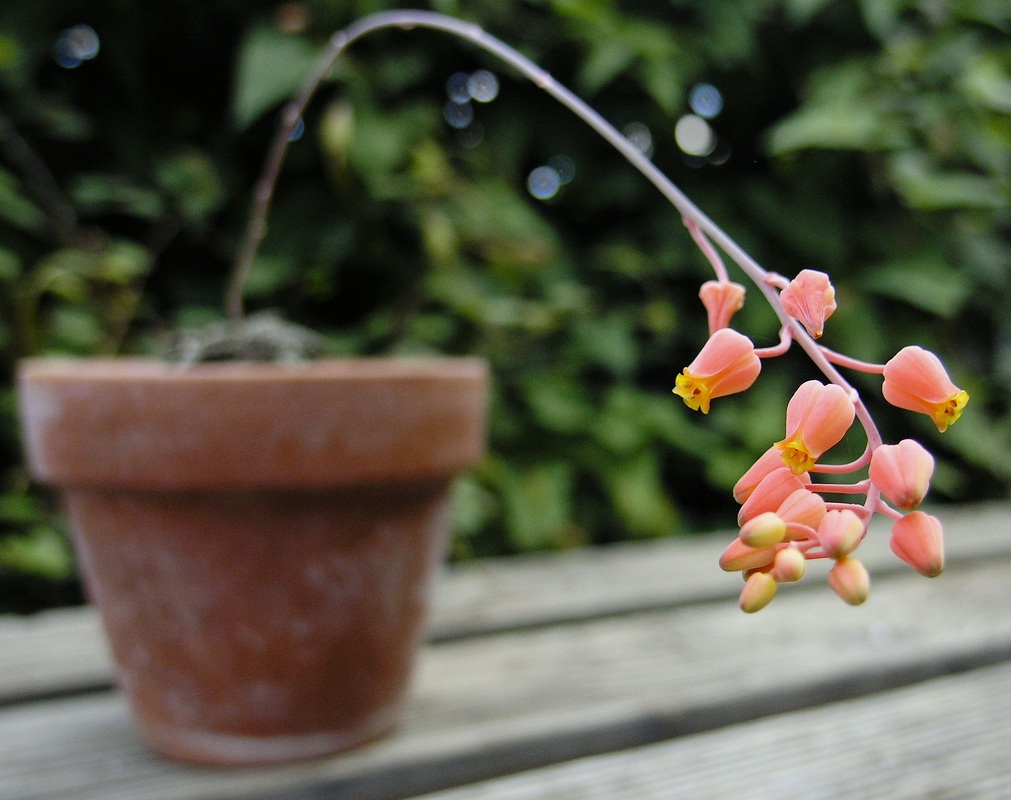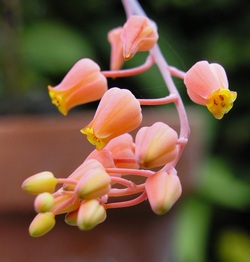Always more to come as we get our act together and document our large collection.
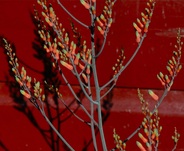
Aloe Gilbertii. Click to view.
Aloe Deltoideodonta var. brevifolia.
|
A charming little spotted aloe from Toliara province in south west Madagascar, found in the wild growing on rocky sandstone at around 1000m, according to 'Aloes the Definitive Guide'.
It is rather lizardy in appearance, having a slightly roughened skin; the spots are raised and able to be detected by the fingers on the surface of the leaf. To about 20cm across. In cultivation I have found it relatively uncomplicated, although it seems to prefer a modest amount of direct sunlight in our high-UV conditions, and will stay the lovely celadon green seen here in the midst of the rosette if given shade, rather than going fawn as the sunned specimens are wont to do. Perhaps not a total beginner's plant; it is a species that will let you know quite swiftly if there is something untoward about its conditions, getting serious brown shriveling of the leaves if under or overwatered, and seeming to prefer a very open soil mixture with plenty of large pumice pieces to aerate the roots. I keep it on the dry side and on the windowsill so I can enjoy its complicated textures and pretty colouration. Some plants will apparently sucker but mine has remained solitary, flowering regularly once a year; this is the first year the inflorescence has branched. The spike has a curious and quite uncanny mobility, swaying like a slo-mo cobra as it grows and completing a north to south change in orientation within the course of single day here, for no apparent reason. The flowers themselves are particularly delicate and drop copious amounts of nectar on anything lying beneath so keep that in mind; I have to shift my Echeveria 'Giant Mexico' out of the way to prevent the drops marring the farinaceous leaves, and I've found (the hard way) that some aloe nectar will strip the finish off certain items of furniture if allowed to harden. It would make some lovely hybrids. To my eye it seems obviously related to Aloe Laeta as well as Imalotensis etc, sharing its shagreeny texture and tiny saw teeth, but what do I know? |
Aloe Maculata
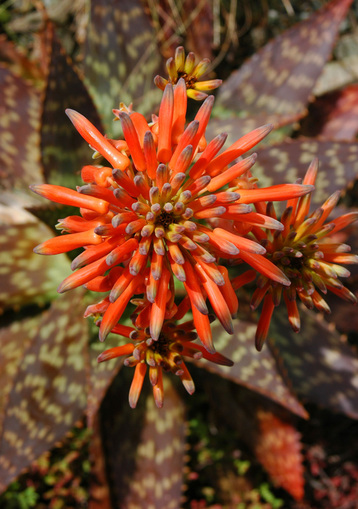
Aloe Maculata is a busy little beast, spreading its spotty goodness outward into dense colonies of pups via suckering and sometimes seed. It's easy to take this species for granted because of its uncomplaining nature but if it were difficult to grow, you can bet it would be the darling of many hardcore collectors with its vivid colouration and prolific, often spectacular flowering habits.
Down here it thrives where 90% of other aloes would perish, tolerating shade, competition and disgusting soil conditions to look good all year round. If you take the time to thin out the colony you will be rewarded with a genuinely handsome display, especially at flowering time which is usually toward winter but can occur at virtually any month of the year. In the wild it is widely distributed across South Africa as a whole; it gets to around 40cm across and will colour up nicely under stress, returning to a vivid maculate green when watered. It is not threatened in its native habitat and hybridizes well with other species, conferring its hardy and floriferous character to its progeny.
An ideal species to mass under tall aloes and other branching succulents; remove the dead leaves from underneath the rosette if possible to avoid forming a hideaway for snails etc.

